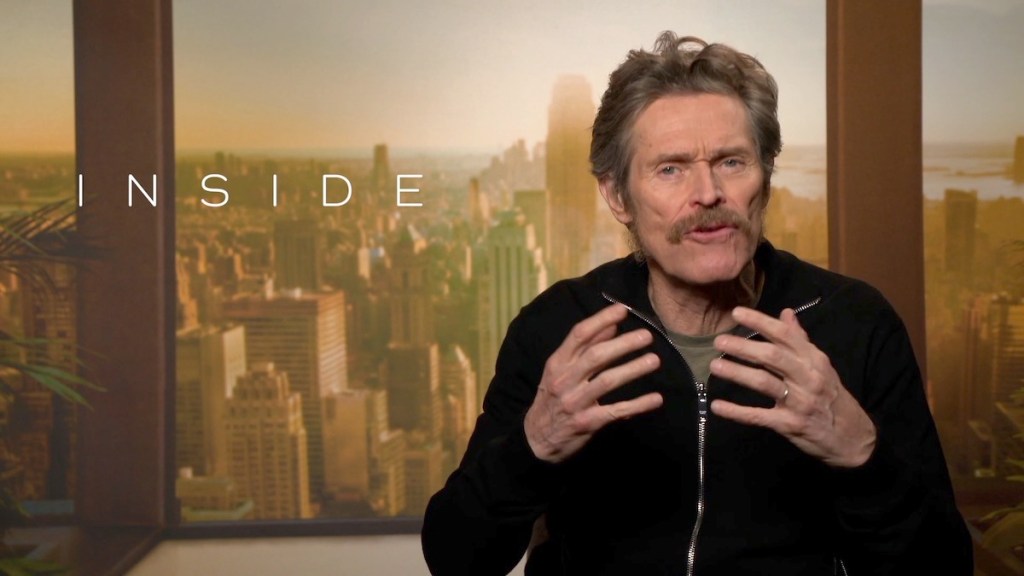ComingSoon Editor-in-Chief Tyler Treese spoke to four-time Academy Award nominee Willem Dafoe about his latest movie Inside, which releases in theaters this Friday, March 17.
“Inside tells the story of Nemo, an art thief trapped in a New York penthouse after his heist doesn’t go as planned,” says the logline. “Locked inside with nothing but priceless works of art, he must use all his cunning and invention to survive.”
Tyler Treese: One thing I really admire about your career is your willingness to take chances and challenge yourself artistically. In Inside, you’re alone in these scenes and you don’t have anybody to bounce off of. It all depends on the crew and your performance. So what was the biggest challenge of filming what is mostly a silent role where your actions and body language really take center stage?
Willem Dafoe: That’s really the pleasure. I didn’t see it as a problem or a challenge, that was the pleasure. That was the opportunity, to tell you the truth. Just a different way of doing things, not using words so much, not bouncing off other people, bouncing off of places, things, objects.
It was a very task-oriented performance. That’s where you start, by doing things, and then you’ll have an experience, and with each choice you make, with each action you make, there’s a consequence and then, story starts to emerge. So, it was a very organic way to work. We shot chronologically. So it was an actor’s dream, actually, to work this way.
I love the survival aspect of the movie. Since it was shot in sequence, you really get to see the mental turmoil take place in your performance. So how was it just getting to go crazier and crazier as filming continued?
To tell you the truth, I didn’t think of it as crazier and crazier. I think this guy is probably someone that’s not necessarily introspective, but this situation affords him to go within, go inside, as it were. And that’s an interesting process. So since I am the solitary actor, more or less in this movie, it allowed me to go inside the context of the narrative.
I love the conflicting imagery of this struggle for survival within a luxury apartment filled with smart devices and high art. So can you speak to just the visual contrast and how it all works in the movie?
This guy gets trapped in this place and he’s surrounded by all the things we value as objects, as material, priceless art, luxurious apartment. But it’s no use to him. What he needs are basic human things. And to see those things that we value in one context, become worthless in another context, always opens up all kinds of questions as to what their inherent value really is.
It puts us in a questioning frame of mind about things that we take for granted, and brings us to things like questions, naturally, I think, like what is our relationship to technology? We know it helps us, but what is the shadow side of that? We know art can be beautiful. We know art can become an object of wealth, but what’s the shadow side of that?
These sort of things crop up in the course of the movie, not in a didactic way or, not an explicit way, but those themes, I think, are kind of interwoven or, not even interwoven, they’re present just in the scenario, and I think the audience will bring what they will to it, and have a dialogue with themselves.










